Sally Rankin led a walk at BBOWT’s Warburg reserve at Bix Bottom on the morning of Wednesday 20 July. The warden gave the group a brief introduction to the reserve and reported on recent management work. After two days of extreme heat, the temperature was significantly lower, but as the morning progressed, conditions gradually became hotter and more humid. The walk started out northwards along a footpath which led steeply uphill through woodland. Plants found beside the path included Ploughman’s-spikenard, Nettle-leaved Bellflower (including a few white specimens), Pale Toadflax and Broad-leaved Helleborine. More Helleborine spikes were found, not yet in flower, further back from the path. There was some debate as to whether they might be Broad-leaved or Narrow-lipped Helleborines. The path opened up, with a wide margin of scrub to one side, and this is where most of the Herb Paris was found. Many of the plants already had brown leaves, together with a glossy black berry-like fruit. Male specimens of both Large and Small Skipper were found perching on the scrub. The next footpath led back down through the woods, and it was bordered in places by big old multi-stemmed Beech trees. A total of 17 spikes of Bird’s-nest Orchid were found beneath the Beech trees. They were long past flowering and had turned a darkish brown, but were still easily recognisable. Low bushes of Spurge-laurel were found nearby.
The footpath led down to Great Hill Ride, which is bordered by a wide margin of Chalk grassland. Flowers seen here included Wild Marjoram, Wild Basil, Wild Thyme, Common Rock-rose, Small Scabious and Common Centaury. Sharp-eyed botanists at the back of the group also spotted Fly Orchid spikes, again well past flowering. Butterflies included Marbled Whites, Meadow Browns, large numbers of Gatekeepers and a few Common Blues. The ride then passed through a stretch of woodland, where more Broad-leaved Helleborines and the seed spikes of White Helleborine were found. The next section of the walk was through Big Ashes, a large field of Chalk grassland. Common Gromwell plants next to the path had both flowers and hard white seeds. Seed spikes of Common Spotted-orchids were found, and a Pyramidal Orchid was still clinging on to the last of its flowers. A family of Marsh Tits called as they moved through the trees at the edge of the field. The next path then led down through woodland to the bottom of the valley. Hairy St John’s-wort and Common Figwort, together with Ringlet butterflies, were seen here. Many dead Ash trees on the far side of the valley made a sad sight. The route then turned left along the track at the bottom of the valley. The track led through a clearing where two Silver-washed Fritillary butterflies were nectaring on Bramble blossom. Orpine, Dark Mullein, Musk Mallow and a Cinnamon Bug were seen here. The next path led up through the Beech woodland on the south side of the valley. Under the trees were a number of wire baskets. A few were protecting Helleborine spikes (none were in flower), but most were empty. Continuing back down the slope, a rare snail, Mountain Bulin Ena montana, was found on the trunk of an Ash tree. It is found in old deciduous woodland on calcareous soils, with its remaining strongholds in the Mendips, Gloucestershire and the Chilterns. The final part of the walk was back along the track at the bottom of the valley to the visitor centre. There were abundant leaves of Green Hellebore beside the path, long past their flowering time early in the year. After the walk, most of the group went on to the White Hart at Nettlebed for lunch.
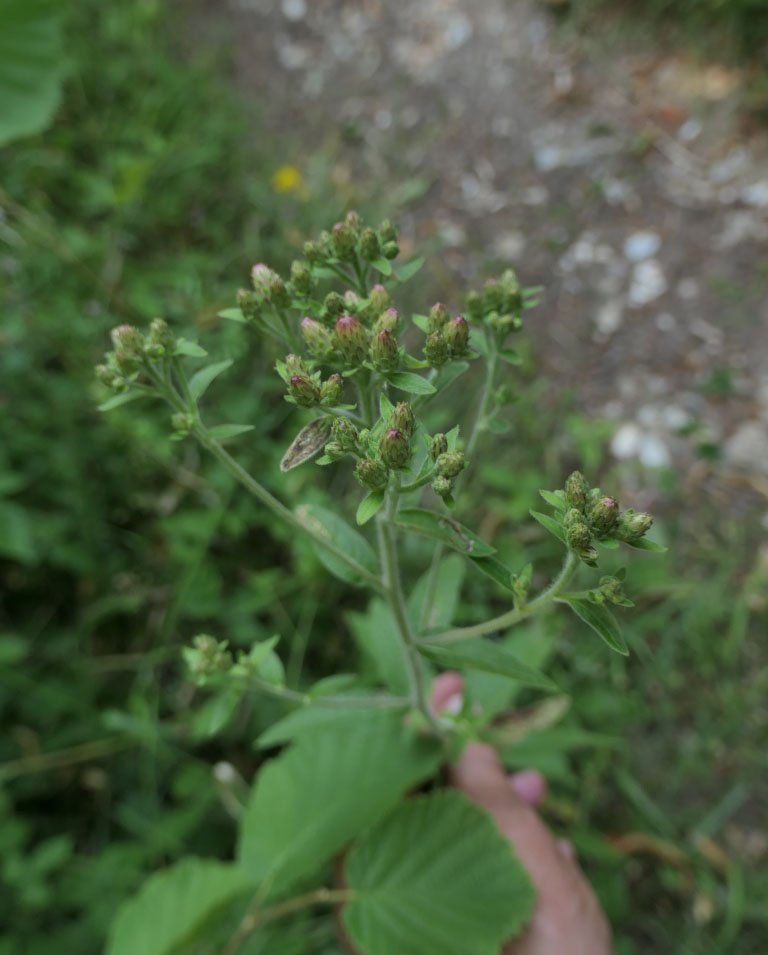
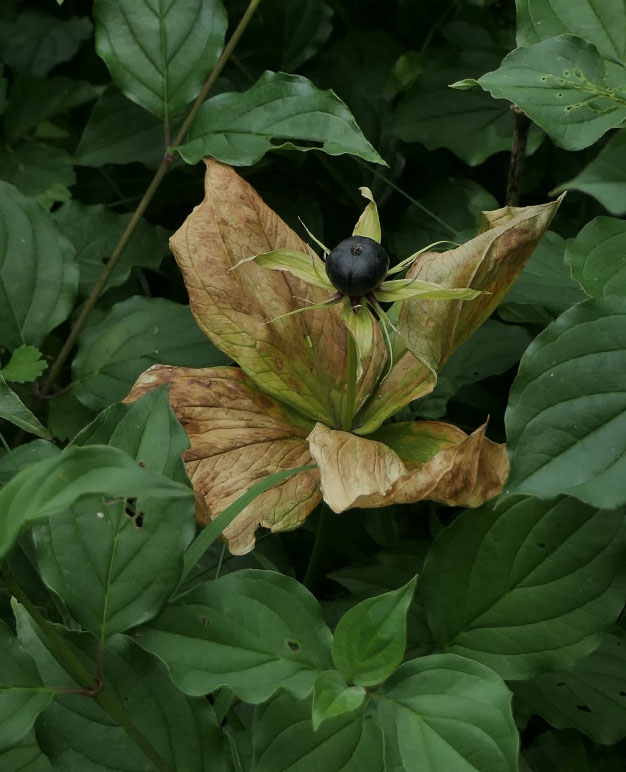
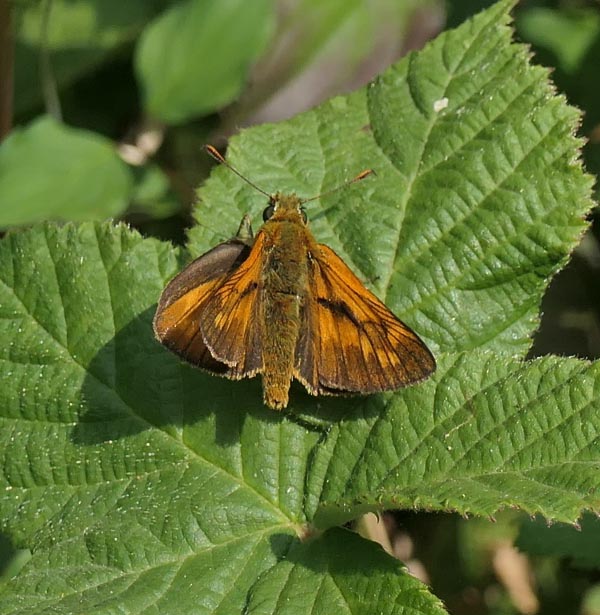

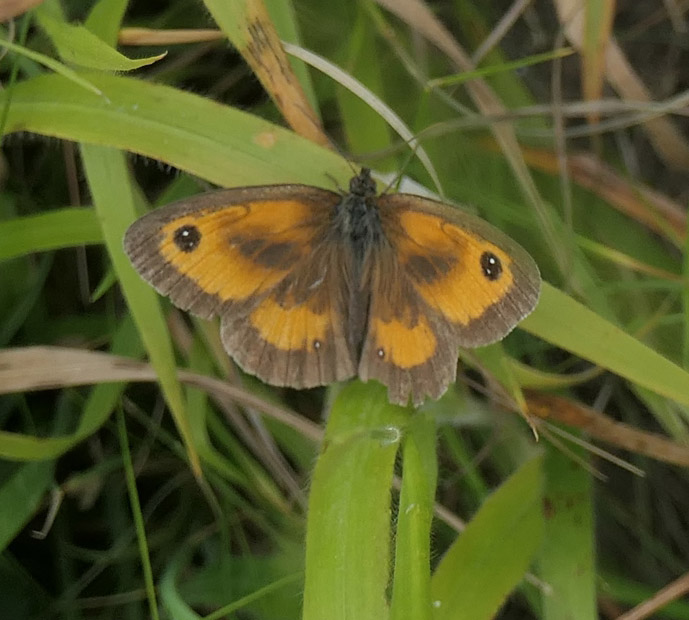
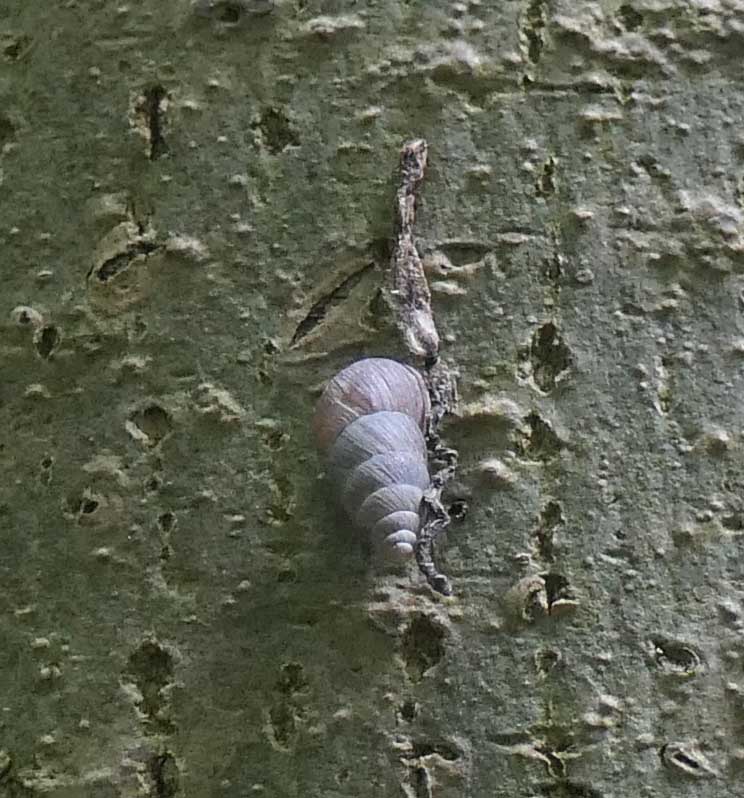
Pictures by Tom Walker
